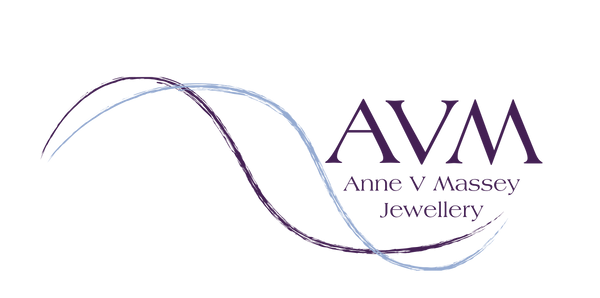It occurred to me as I was typing up my previous blog-post on making and wellbeing that it touched on matters quite personal to me to do with my creative practice. I had already been planning to write about this but didn't really know where to start. Well, it might not prove the smoothest segue, but here goes.
In my making most of the techniques I use date back thousands of years. Forming metal with hammers is as old as metalworking itself, something like ten thousand years. The main technique I employ and love, anticlastic raising, was known to the ancient Celts. They elevated it to extraordinary heights in making gold jewellery such as torcs, fabulous examples of which can be seen in the Pitt Rivers Museum at Oxford University and the British Museum.
I have no desire to work metal under Bronze Age - or even Mediaeval - conditions. I am very happy not to have to smelt my own silver or beat it out to the desired thickness from ingots. I love being able to order piercing-saw blades online instead of having to cast them in bronze from grasshoppers' legs (sorry, but I can't remember who first told me this and I have failed to verify it by an online search, but it's a fascinating suggestion as to how pre-industrial metalsmiths equipped themselves). And it's not the age of the technology that makes it attractive to me; casting of metals is probably as old as hammering, yet I have never had work cast. Why? It's about the immediacy.
Laser cutting and 3D printing (among others) are high-tech processes which many makers find invaluable in their practice, and I have no quibble with this. They're not for me, though. I need the intimacy, the engagement with the metal, which my practice gives me. Gently drawing the sawblade through the sheet, manoeuvring the metal round the curves rather than the blade, knowing that if I force it I'm liable to snap the blade. Feeling the metal harden as I hammer it, adapting to and exploiting this, watching it change shape. Directly experiencing, through my senses, the causal relationship between what my body is doing and the form of the physical object produced. Changing the world - in an infinitesimally small way - with each hammer blow. This is not to accord it any particular importance; it probably doesn't matter to anyone other than myself and possibly the person who will eventually wear the piece. But for me, it's an encounter with the ultimately real. Refined silver may be a product of human culture, but its properties which my work exploits - its malleability and ductility - are not. The laws of mechanics underlying the hammering process, action and reaction, describe something fundamentally real.
3D printing has produced many beautiful metallic objects by way of prototyping and casting; but for the most part they could be made from anything. The design process has become severed from the intrinsic properties of the material. The metal doesn't push back as it does when you hammer it. There's no dialogue. I can only make the metal do certain things which it is predisposed to do, and my design process is predicated upon this. I design more with a hammer in my hand than with a pencil.
Of course, I don't think about all this when I'm actually working. I'm too focussed on the process. I had to actually sit down and apply myself to be able to articulate the ideas which underpin my making. And as I explored in my previous blog post, it's that focus, that integration of the physical, the intellectual and the emotional, which makes craft such a deeply satisfying activity. That's not to deny that it can be frustrating at times - developing new work can feel like banging your head against a wall or pulling your own teeth at times, especially when it requires a significant addition to your skillset. And the other aspects of the trade - running a small business - often feel incompatible with and antithetical to the creative side. But if it weren't intrinsically rewarding, how many of us would do it? After all, not many people get rich that way. Corny as it sounds, we do it for love.

